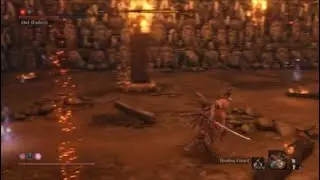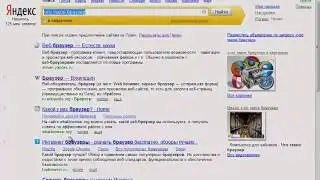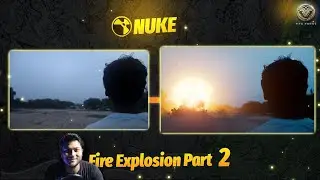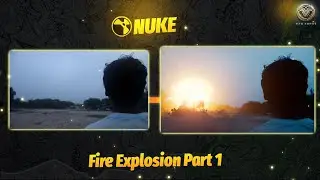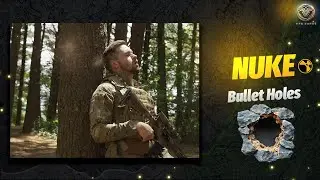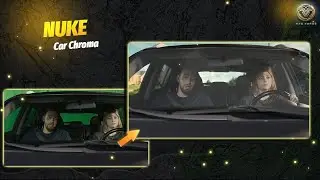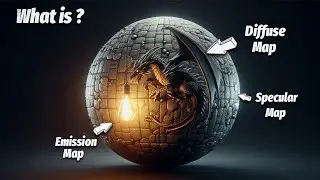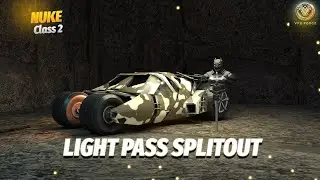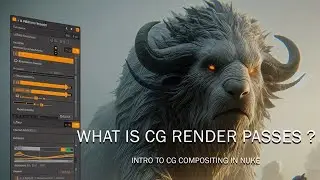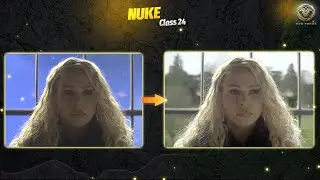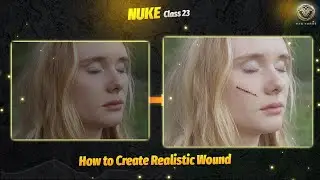How to do Car Chroma Keying shorts in Nuke | Advanced Keying | BY VFX FORGE
Assets used-https://drive.google.com/file/d/1iYnD...
https://www.actionvfx.com/practice-fo...
Chroma keying is an essential skill in VFX that allows creators to combine live-action footage with computer-generated elements or backgrounds. When working in Nuke, one of the most advanced compositing tools in the industry, keying can be taken to the next level, particularly when dealing with complex objects like cars. In this tutorial, we'll dive deep into advanced chroma keying in Nuke, specifically focusing on car chroma keying. This detailed guide will cover advanced techniques for clean keying, artifact removal, handling reflections, and preserving intricate details like shadows and highlights on a reflective surface.
Chroma keying a car can be particularly challenging because of the various factors that come into play. Cars have reflective surfaces, glass windows, and detailed parts like tires and grills, all of which can complicate the keying process. This tutorial will focus on handling these complexities using Nuke's keying tools and advanced techniques to achieve professional-grade results.
Understanding the Basics of Car Chroma Keying
Before diving into advanced techniques, it's important to have a basic understanding of chroma keying. The principle of chroma keying revolves around isolating a particular color (often green or blue) in the footage and removing it to reveal a different background. When it comes to chroma keying a car, this process becomes more complex due to the car's reflective nature.
Cars often reflect the green or blue screen behind them, making it difficult to separate the car from the background. Additionally, transparent parts like windows can show unwanted background reflections. To tackle these challenges, we will be using Nuke’s advanced keying tools, including the Primatte node, Keylight, and EdgeBlur.
Assets used -
In this powerful Nuke tutorial, we dive deep into light passes splitout in Nuke and how to efficiently integrate live action with CG in Nuke. Whether you're working on a VFX-heavy project or a personal compositing demo reel, understanding how to separate and manipulate light passes is crucial for achieving realistic results. Learn the secrets of Nuke compositing by breaking down CG renders, tweaking diffuse passes, specular passes, and more for total control over your lighting.
We also cover a comprehensive workflow for blending live-action footage with CGI elements in Nuke, making sure the final composite feels seamless. Whether you're working with 3D passes or complex multi-channel EXRs, this tutorial will show you how to make the most of Nuke's node-based compositing system.
Don’t miss out on mastering key Nuke techniques that every VFX artist should know! Subscribe to VFX Forge and stay updated on the latest industry tricks!
Keywords: light passes splitout in Nuke, Nuke compositing tutorial, live action CG integration in Nuke, CG compositing in Nuke, Nuke VFX tutorial, Nuke light passes, diffuse pass in Nuke, specular pass in Nuke, VFX compositing, live-action CGI Nuke, multi-channel EXR in Nuke, VFX Forge, Nuke node-based compositing, industry-level VFX
#VFX #NukeCompositing #CGI #NukeTutorial #VisualEffects #Compositing #LightPasses #VFXArtist #CGIntegration #LiveActionCG #NukeVFX #FilmMaking #PostProduction #VFXForge #3DRendering #MotionGraphics #VFXBreakdown #CGWorkflow #DigitalCompositing #VFXCommunity



